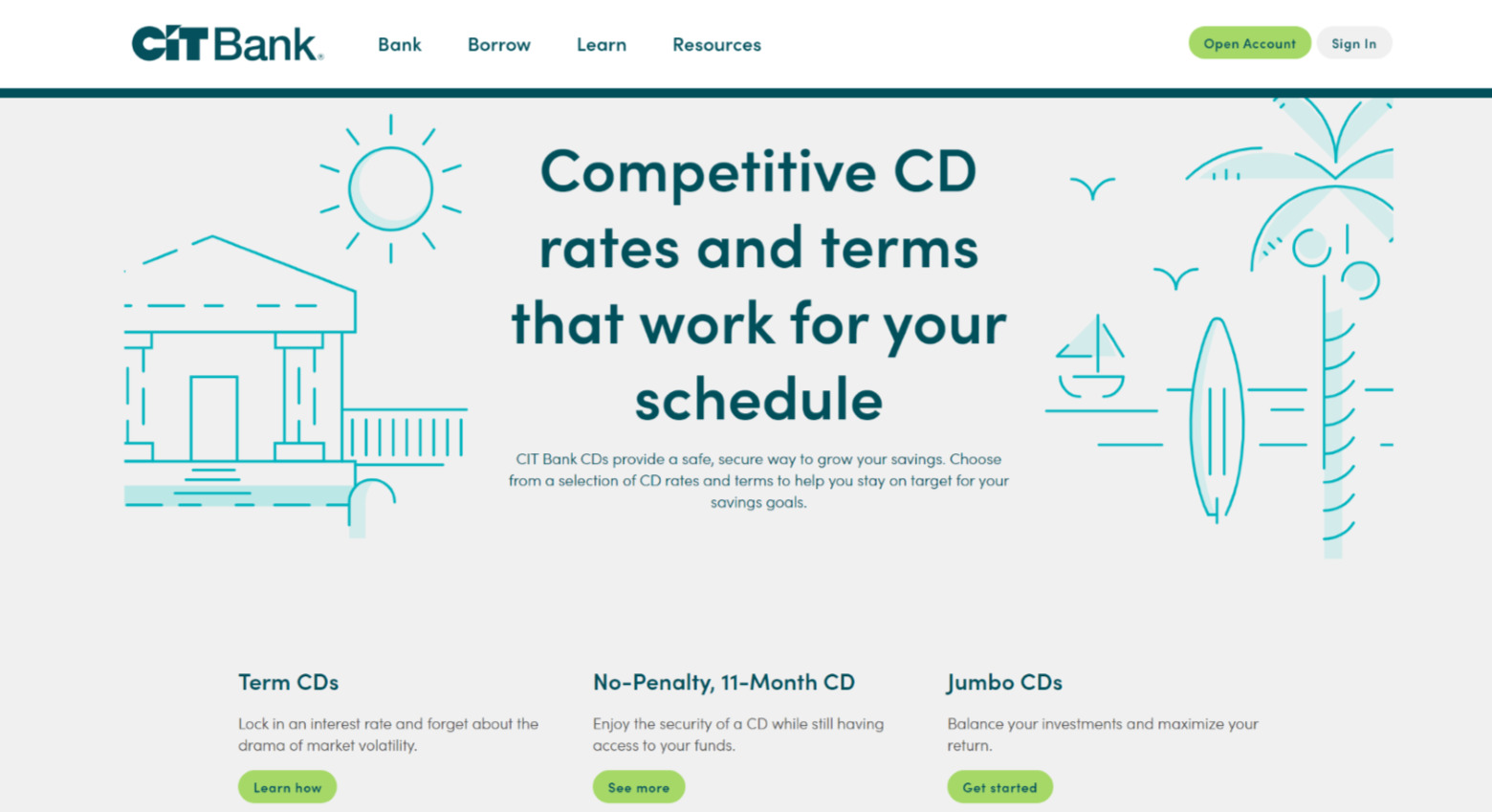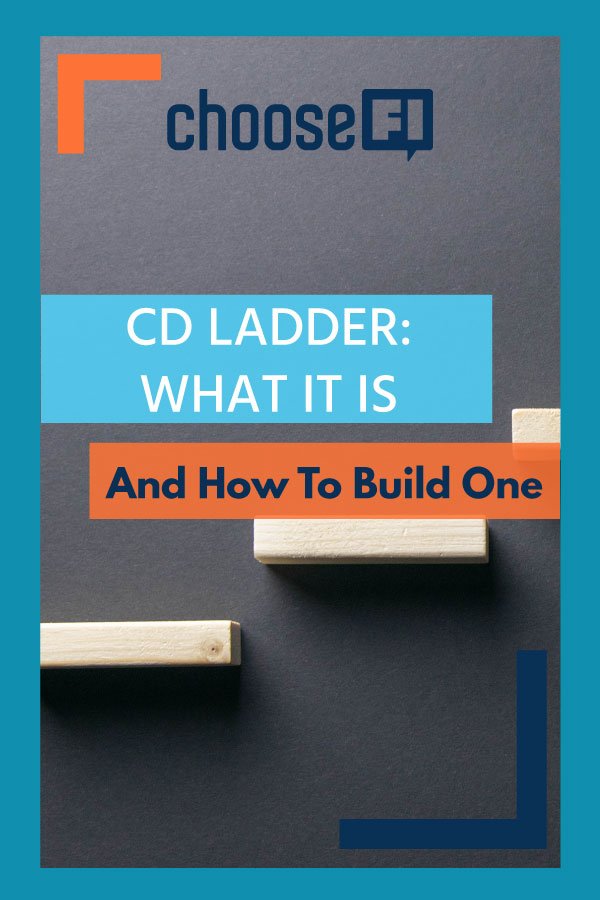It’s difficult to balance getting a good return on invested money with having access to that money when you need it. If you’re looking for the solution to this dilemma, a CD ladder might be the answer.
A CD ladder is an investment strategy in which investors equally divide and invest their money in multiple CDs with varying maturity dates. You build a CD ladder by spreading out the money that you have to invest in CDs with different terms of maturity. This allows you to take advantage of fluctuating interest rates and also gives you access to a portion of your saved money on a regular basis.When done correctly, a CD ladder can offer two benefits. First, investors can often get a better return on their money than they would if they had placed their money in a savings or money market account. But, on the other hand, savers don’t have to wait as long to access portions of their money as they would if they had invested all their money in a single long-term CD.
Let’s take a closer look at what a CD ladder is and when it makes sense as an investment strategy. We’ll also explain why CD ladders can make even more sense during uncertain economic times. Finally, we’ll look at how to shop for a CD ladder to get the best rates.
Table of Contents
- What Is A CD And How Does It Work?
- What Is A CD Ladder?
- What Is The Penalty For Withdrawing Money From A CD Early
- Are CD Ladders A Good Investment?
- How CD Ladders Can Hedge Against Uncertain Interest Rates
- Why Fed Rate Cuts Could Make CD Ladders More Attractive
- Where Can You Set Up A CD Ladder
- The Bottom Line
What Is A CD And How Does It Work?
A certificate of deposit (CD) is basically a special savings account. CDs are FDIC insured and carry no risk, the catch is that you agree to leave the money in the account for a set amount of time. Typically, the longer you agree to leave the money in the account, the higher the interest rate.
CDs come with a wide variety of terms. You can find CDs with terms as short as three months and as long as five years. If you withdraw the money before the end of the term (called the maturity date), you’ll be charged a penalty. But once the maturity date has passed, you can withdraw the money at any time penalty-free.
What Is A CD Ladder?
In general, the longer the term, the higher the interest rate you’ll be offered on a CD. Higher interest rates may be attractive, but in order to qualify for them, you’ll have to be okay with your money being inaccessible for several years. Many savers just don’t feel comfortable with the inflexibility of that arrangement.
Enter the CD ladder.
With a CD ladder, you can take advantage of those long CD terms (and high interest rates), without tying all your money up for years. Here’s how it works. Imagine that you have $10,000 you want to put into CDs. You could divide up that $10,000 into five separate CDs as shown below:
- One-year CD: $2,000
- Two-year CD: $2,000
- Three-year CD: $2,000
- Four-year CD: $2,000
- Five-year CD: $2,000
With this set-up, every year another $2,000 would reach its maturity date. As each CD matures, you could choose to withdraw the funds or, if you don’t need to use the money, you could renew into a new five-year CD. And you’d repeat that process moving forward. If you set up your CD ladder in April 2020, this is what the renewal schedule would look like:
- April 2021: Renew the one-year CD to a five-year CD
- April 2022: Renew the two-year CD to a five-year CD
- April 2023: Renew the three-year CD to a five-year CD
- April 2024: Renew the four-year CD to a five-year CD
- April 2025: Renew the original five-year CD to a new five-year CD
Eventually, you will have all $10,000 earning the highest interest rate possible but still have access to some money every year if you need it.
While the example above has a five-year time horizon, you can set up shorter CD ladders as well. For instance, you could divide $12,000 up four ways by putting $3,000 each into a six-month, one-year, 18-month CD, and two-year CD.
What Is The Penalty For Withdrawing Money From A CD Early
Different banks will have different penalties for withdrawing money early. The good news is that they aren’t usually too painful if you must access your funds. Typically the penalty is in the form of a few months of interest.
While having to give up a couple of month’s interest isn’t ideal, it’s not that big of deal.
For example, at CIT Bank you will be charged between 3 and 12 months of interest depending on the length of the CD. It’s not what we hope for but your principal is never in danger. It’s not like when you withdraw from your 401(k) early and your actual principal is penalized at 10%. With a CD you can only lose interest, your original amount is always safe.
Are CD Ladders A Good Idea?
CD ladders are perfect for money that you likely won’t use but still don’t want to be subject to any risk. For example, if you like to have a large emergency fund you may not want the entire thing earning the low rates of a standard savings account. Perhaps you keep half in a regular savings account and half in a CD ladder. That way you have something to tide you over until a CD matures and you can access the funds penalty-free.
To decide if a CD ladder is a good idea, you need to consider how long it will be before you need to access your funds. Below, we look at three different investment time horizons to see when a CD ladder might make sense and when it might not be the best choice.
1. You May Need To Access The Money In Less Than One Year
If you think you might need to withdraw your money in less than one year, then you’re probably planning to use it for an imminent expense. You might also be intending for this money to be part of your emergency fund.
A CD ladder is probably not your best choice for investment horizons of less than one year. Typically, three-month and six-month CDs don’t yield as much as those with maturity dates of a year or longer. So for these types of expenses, a high-yield savings account may be a better choice.
Related: Emergency Funds 101: The Ultimate Guide to Emergency Funds
2. You’ll Need To Access The Money In One To Five Years
We often plan and save for big expenses several years ahead of time. For example, you may be planning to buy a car in two years, or you may be planning to buy a home in three years.
A CD ladder could be a great option for these types of scenarios! Unlike stock market investments, you’d know for sure that you’ll get a guaranteed rate of return. However, since CDs are less liquid than savings accounts, the bank may offer you a better interest rate.
Related: How to Apply for a Mortgage While Pursuing FI
3. You Won’t Need To Access The Money For At Least Five Years
If you don’t plan to touch the money for at least five years, then a CD ladder is again probably not your best choice. Instead, your money would be better invested in securities that offer a higher return, like stocks, bonds, index funds, and ETFs.
As Investor.gov explains regarding stock market investments, while they come with a higher risk than bank savings products, they’ve also consistently provided the highest rate of return over long periods. So for example, if you’re saving for a retirement date that’s 15 years away, stock market investments will almost certainly yield you a better return than a CD ladder.
Related: Stocks vs. Mutual Funds vs Index Funds vs. ETFs
How CD Ladders Can Hedge Against Uncertain Interest Rates
One of the nice things about a CD ladder is that they can insulate you against interest-rate volatility. If interest rates go up, you’ll continue to buy new CDs every year (or sooner) at the higher rates. And, if interest rates go down, you’ll have a large portion of your savings locked in at the older, more attractive rates.
So, with a CD ladder, you don’t have to feel pressured to get the timing perfect like you would if you put the entire savings pot in a single CD. Working a CD ladder is essentially the CD version of dollar-cost averaging.
Why Fed Rate Cuts Could Make CD Ladders More Attractive
Six months ago, high-yield savings accounts were all the rage. Even Fintech companies like Wealthfront, Betterment, and Credit Karma were launching their own high-yield cash accounts, many with interest rates at or above 2%.
But as a result of the COVID-19 crisis, the Fed recently dropped rates to a range of 0% to 0.25%. That has brought the momentum surrounding high-yield savings accounts to a screeching halt. When I opened my Wealthfront cash account in September of 2019, it came with an eye-popping 1.78% APY. Today, my money in that account is earning me a dismal 0.26% APY.
So as savings account rates continue to drop, CDs might make more sense. In a low interest-rate environment, fixed-rate banking products tend to get hammered. But a CD ladder could help you earn at least some return on the money you have sitting in the bank.
Where Can You Set Up A CD Ladder
You can set up a CD ladder with any financial institution that offers CDs. Most banks and credit unions publish their current CD rates on their website. We are partial to CIT Bank, they offer great rates and even offer an 11-month penalty-free CD.
CIT Bank

CIT Bank offers nine different CD products from six months to five years. Each of them offers a solid APY. Here are their current rates:
- 6 Months: 0.72%
- 11 Months: 1.20%
- 13 Months: 1.35%
- 18 Months: 1.35%
- 1 Year: 1.30%
- 2 Years: 1.30%
- 3 Years: 1.30%
- 4 Years: 1.35%
- 5 Years: 1.40%
Each of their CDs requires an investment minimum of $1,000. None of them charge an account opening fee or ongoing maintenance fee. And, most impressively, their 11-month CDs come with no withdrawal penalties.
Get started with your CIT Bank CD Ladder.
The Bottom Line
With a CD ladder, you can rest easy knowing that your money is safe and earning a fixed rate of return. Plus, the staggered maturity dates can protect you against the ups and downs of a volatile interest-rate climate. Finally, a CD ladder will often yield a better overall return than a savings account, especially after Fed rate cuts.
A CD ladder won’t be the right investment decision for everyone, especially if your investment time horizon is less than one year or beyond five years. But over a one-to-five-year period, a CD ladder can offer solid a fixed-rate return while keeping your investment principal safe.
Related Articles
- 100 Ways To Get 1% Better With Your Finances
- Emergency Funds 101: The Ultimate Guide to Emergency Funds
- Why Investing Conservatively Is Better
- The Advantages Of The Individual Investor: Why You Can Beat Professional Money Managers




